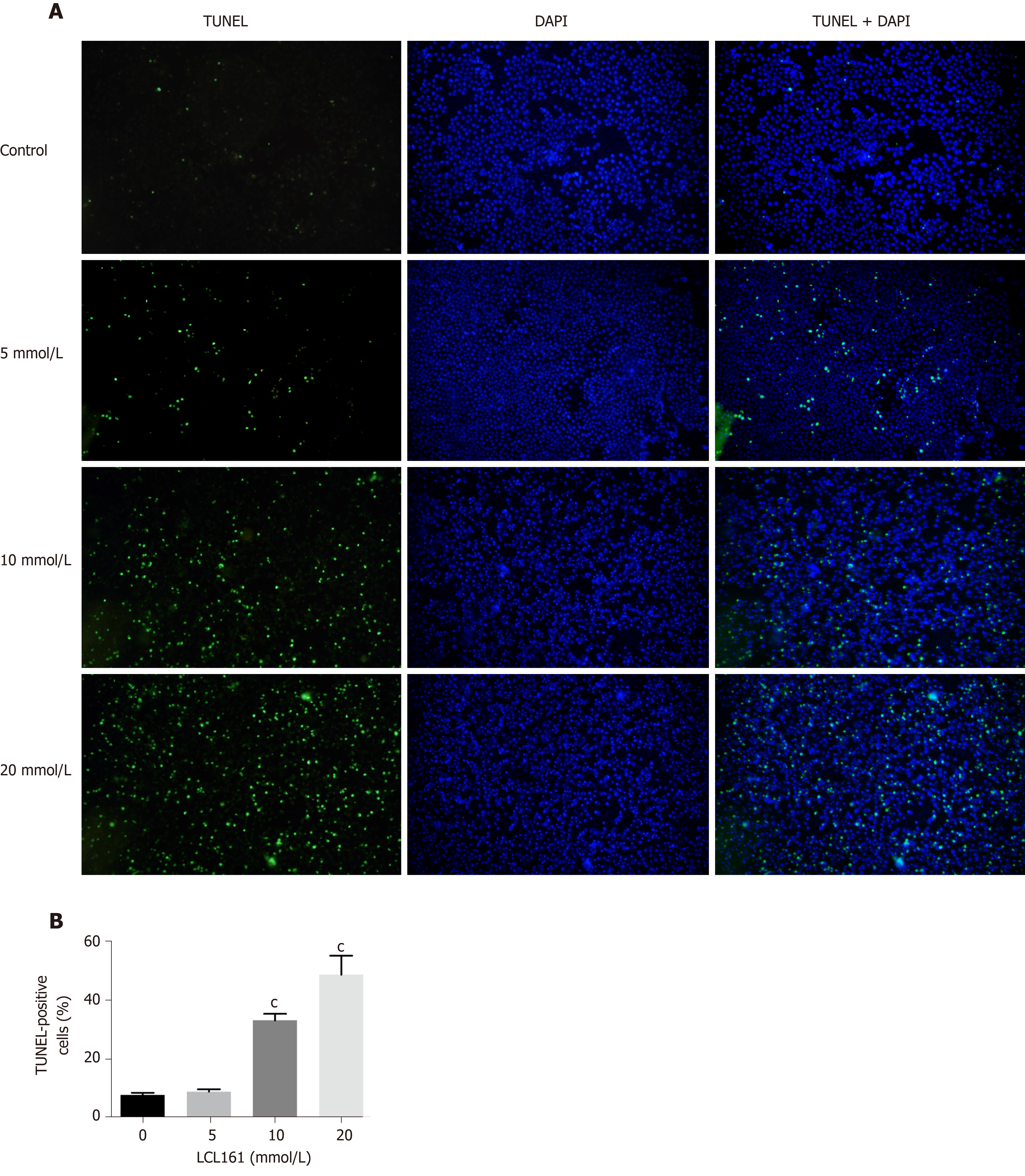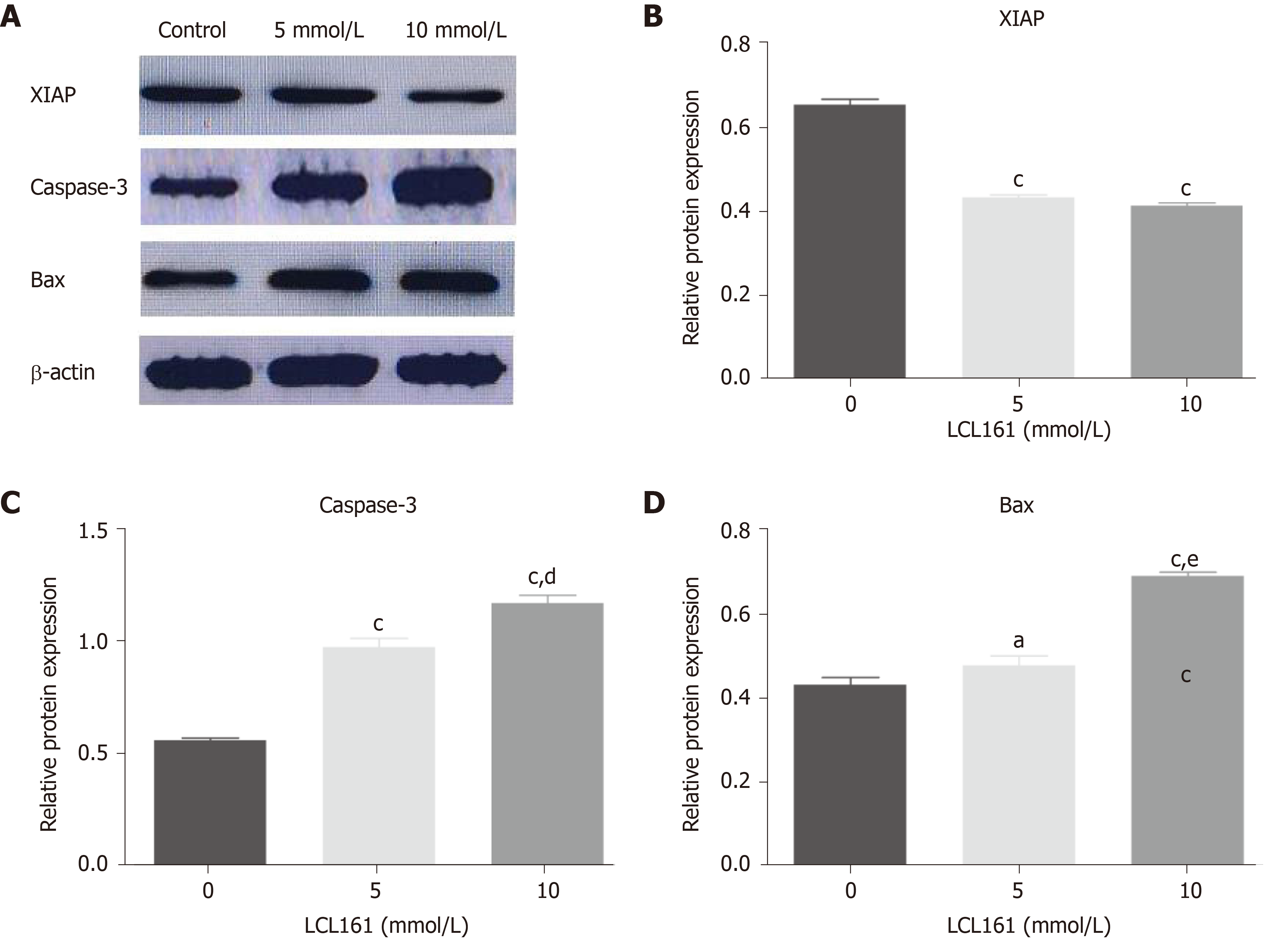Copyright
©The Author(s) 2021.
World J Clin Cases. Jul 6, 2021; 9(19): 5019-5027
Published online Jul 6, 2021. doi: 10.12998/wjcc.v9.i19.5019
Published online Jul 6, 2021. doi: 10.12998/wjcc.v9.i19.5019
Figure 1 Proliferation of ECA109 cells in the control group and treatment groups at different time points.
Proliferation of ECA109 cells decreased with the increase in the concentration of LCL161 (P < 0.05). A: 24 h time point; B: 48 h time point; C: 72 h time point.
Figure 2 Proliferation of ECA109 cells in the control group and treatment groups with different concentration of LCL161.
Proliferation of ECA109 cells decreased in the 5 mmol/L, 10 mmol/L, and 20 mmol/L groups compared to the control group (P < 0.05) at different time points (24 h, 48 h, and 72 h). A: Control group; B: 5 mmol/L LCL161 treatment group; C: 10 mmol/L LCL161 treatment group; D: 20 mmol/L LCL161 treatment group.
Figure 3 Effects of LCL161 on apoptosis of ECA 109 cells.
Serum-starved ECA109 cells were stimulated with LCL161 (5-20 mmol/L) for 24 h. A: The cell apoptosis was assayed by using TUNEL staining. Magnification × 40; B: Bar graphs showing mean percentage of DAPI-stained ECA109 nuclei that were TUNEL-positive following treatment with different concentrations of LCL161. cP < 0.001 vs control.
Figure 4 Effects of LCL161 on apoptotic signals.
Serum-starved ECA109 cells were stimulated with LCL161 (5-20 mmol/L) for 48 h. A: The expression of XIAP, Caspase-3, and Bax was measured by Western blot; B-D: Bar graphs showing quantitative analysis of Western blot analysis (B: XIAP; C: Caspase-3; D: Bax). The bands of proteins were normalized to those of β-actin. mean ± SD. aP < 0.05 vs control, cP < 0.001 vs control, dP < 0.01 vs 5 mmol/L group, eP < 0.001 vs 5 mmol/L group.
- Citation: Jiang N, Zhang WQ, Dong H, Hao YT, Zhang LM, Shan L, Yang XD, Peng CL. SMAC exhibits anti-tumor effects in ECA109 cells by regulating expression of inhibitor of apoptosis protein family. World J Clin Cases 2021; 9(19): 5019-5027
- URL: https://www.wjgnet.com/2307-8960/full/v9/i19/5019.htm
- DOI: https://dx.doi.org/10.12998/wjcc.v9.i19.5019












